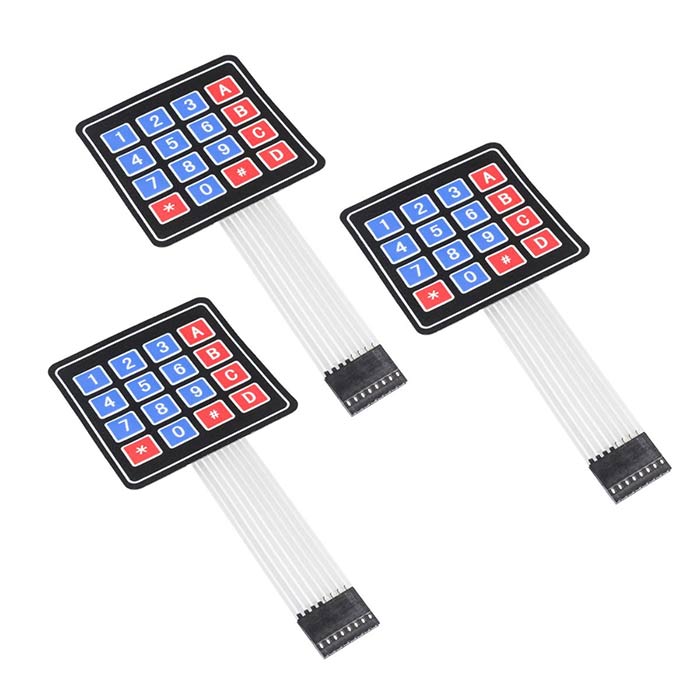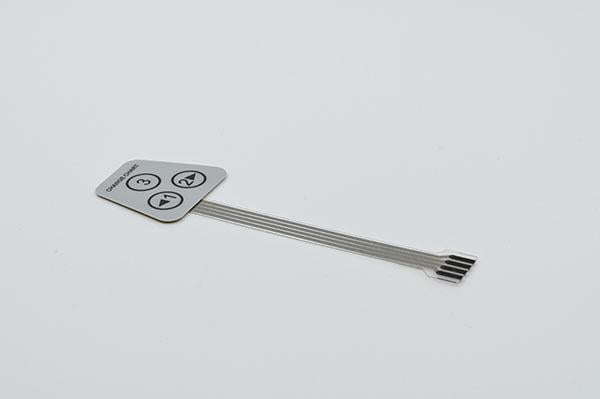All Regarding Membrane Layer Switch: Understanding Its Design and Capability
When you think of the control interfaces in contemporary tools, membrane layer buttons typically enter your mind. These parts are more than just switches; they blend layout and capability seamlessly. Recognizing just how they function and what makes them efficient can transform your viewpoint on everyday electronics. There are nuances to their layout and efficiency that you could not be conscious of. Let's explore what sets membrane changes besides other control systems.
What Are Membrane Switches?

Membrane switches can additionally be tailored regarding form, dimension, and graphics, allowing manufacturers to develop special interfaces tailored to details products. In general, membrane layer switches play a substantial function in enhancing user experience throughout a broad range of applications.
How Membrane Layer Changes Work
When you press a secret on a membrane layer button, it turns on a straightforward yet efficient mechanism. membrane switch manufacturer. The top layer, usually made of versatile material, pushes down onto a conductive layer under it.
You'll discover that the tactile responses varies based on the switch design, providing either a soft click or a more obvious action. When you launch the trick, the membrane layer returns to its original setting, reopening the circuit and stopping the signal. This procedure happens almost instantly, ensuring a receptive individual experience.
Membrane layer buttons are popular because of their longevity and resistance to dirt and moisture, making them suitable for various applications, from house appliances to clinical devices. Recognizing this procedure aids you value their widespread usage.
Key Parts of Membrane Layer Switches
Understanding the vital elements of membrane buttons is fundamental for comprehending their performance and style. The protective layer shields against environmental aspects and put on, prolonging the switch's life-span. By comprehending these elements, you'll acquire insight right into just how membrane layer changes operate and their importance in numerous applications.
Products Utilized in Membrane Switch Layout
The performance and resilience of membrane switches over greatly depend upon the materials made use of in their layout. You commonly come across polyester and polycarbonate as main substrates because of their superb toughness and flexibility. These materials resist scratches and chemicals, making them perfect for requiring settings.
The conductive layers commonly make use of silver or carbon, chosen for their reliability and conductivity. membrane switch manufacturer. Silver gives remarkable performance, while carbon is a cost-effective option. For the overlay, you could consider a matte or glossy surface, relying on your aesthetic demands and individual experience
Make certain to choose adhesives that withstand environmental variables like temperature level and moisture. Picking the appropriate materials will certainly assure your membrane switch stands the test of time.
Style Considerations for Membrane Layer Buttons
While developing membrane buttons, it's important to take into account numerous elements that influence their functionality and individual experience. Begin by focusing on the layout and button size; make sure they're intuitive and very easy to navigate. Take into consideration the tactile feedback websites you wish to give-- will customers require an obvious click or a softer touch? In addition, consider the materials you'll make use of, as they'll impact resilience and visual appeals.
Validate your layout suits environmental elements, like wetness or temperature variants, which might influence efficiency. additional resources By meticulously thinking about these components, you'll create a membrane layer button that improves usability and satisfaction.
Applications of Membrane Buttons
Membrane layer buttons are versatile elements discovered in different applications, from industrial tools to customer electronics. You'll see their influence in makers that require resilient user interfaces and in gadgets that benefit from streamlined layouts. Understanding these applications helps you appreciate the performance and functionality of membrane layer buttons in day-to-day technology.
Industrial Devices Use
When you're looking to boost the functionality of industrial devices, membrane layer buttons use a reputable service that combines longevity with easy to use design. These buttons are ideal for harsh settings, offering resistance to dust, moisture, and chemicals. Embrace membrane switches to improve your operations and enhance general efficiency.
Customer Electronic Devices Combination
In the domain name of customer electronics, membrane layer switches play a vital role in boosting individual communication and tool capability. Membrane switches likewise guarantee longevity and resistance to dust and moisture, extending the lifespan of your electronics. By selecting membrane buttons, you enhance not simply the functionality yet likewise the design of your gadgets, making day-to-day interactions smooth and delightful.
Advantages and Disadvantages of Membrane Layer Buttons
While membrane switches use an array of benefits, they also come with some disadvantages that you need to consider. One significant benefit is their portable layout, making them perfect for space-constrained applications.

Nonetheless, there are drawbacks. Membrane layer switches can have a shorter life-span compared to mechanical switches, specifically under hefty use. They can additionally be much less tactile, which could influence user feedback during operation. If damaged, fixing them can be tough and often needs full replacement. Inevitably, their sensitivity to extreme temperature levels and ecological problems might limit their effectiveness in certain setups. Stabilizing these pros and cons will aid you establish if membrane layer buttons are the right fit for your task.
Frequently Asked Concerns
How Much Time Do Membrane Layer Switches Normally Last?
Membrane switches over normally last between 5 to one decade, depending upon usage and ecological problems. You'll wish to assess elements like wear, direct exposure to dampness, and temperature fluctuations to gauge their durability properly.
Can Membrane Layer Switches Be Personalized for Particular Designs?
Yes, you can customize membrane layer buttons to fit certain styles (membrane switch manufacturer). You'll have the liberty to choose colors, shapes, and formats that match your job's requirements, guaranteeing they blend effortlessly with your total aesthetic
What Is the Expense Range for Membrane Change Production?
The expense range for membrane layer button production generally falls in between $1 and $10 each, depending on variables like style intricacy, amount, and materials. You can get quotes from makers to locate the company website very best choice.

Are Membrane Switches Water-proof or Resistant?
Membrane buttons can be made to be waterproof or resistant, depending upon products used and building techniques. If you need them for wet environments, ensure you define those needs throughout the design process.
Exactly How Do Membrane Layer Switches Over Contrast to Traditional Switches?
Membrane switches are normally thinner and extra adaptable than traditional switches, providing a streamlined layout. They're commonly easier to clean and integrate, however might not supply the responsive responses you're made use of to with mechanical alternatives.
Conclusion
